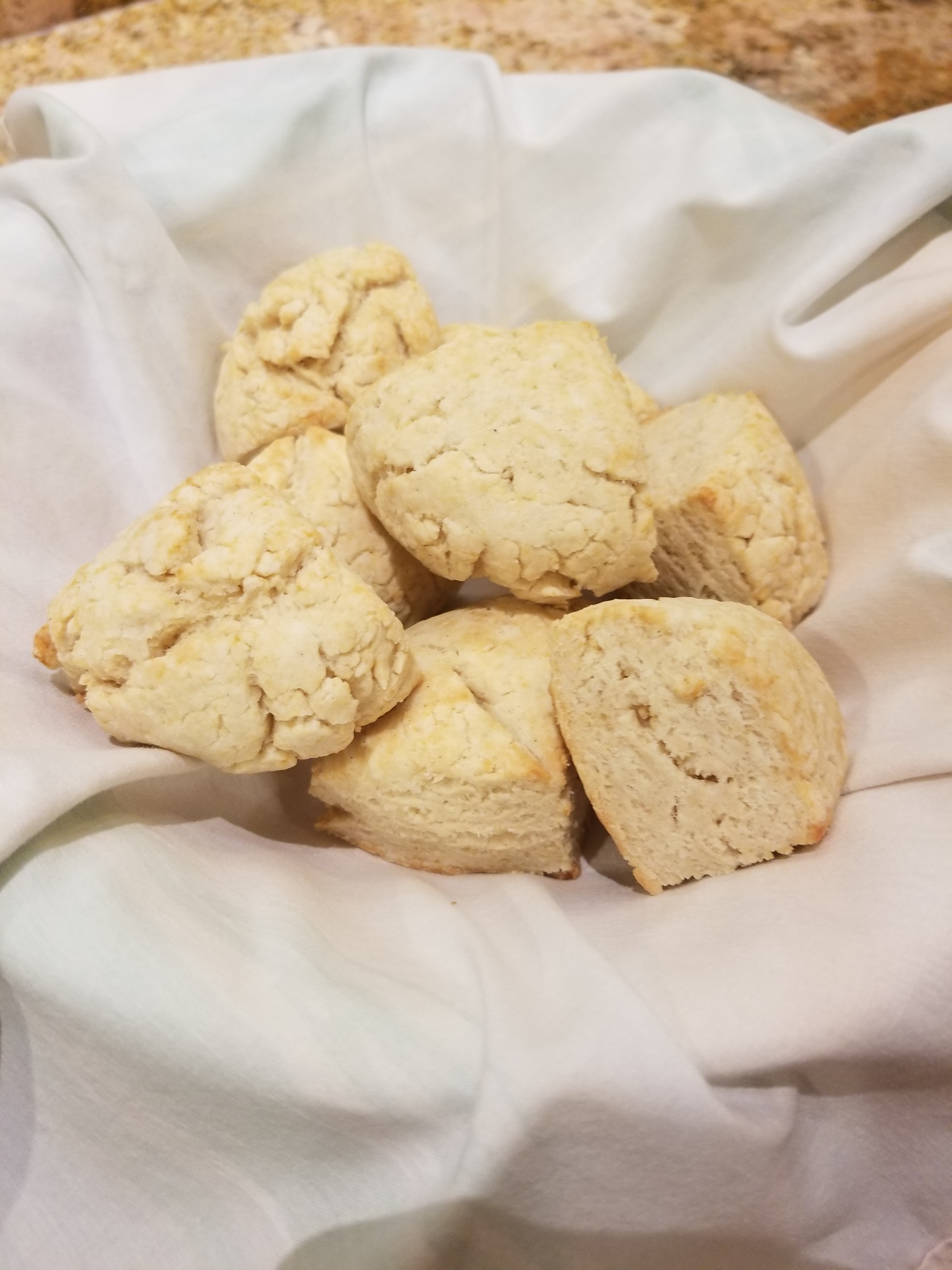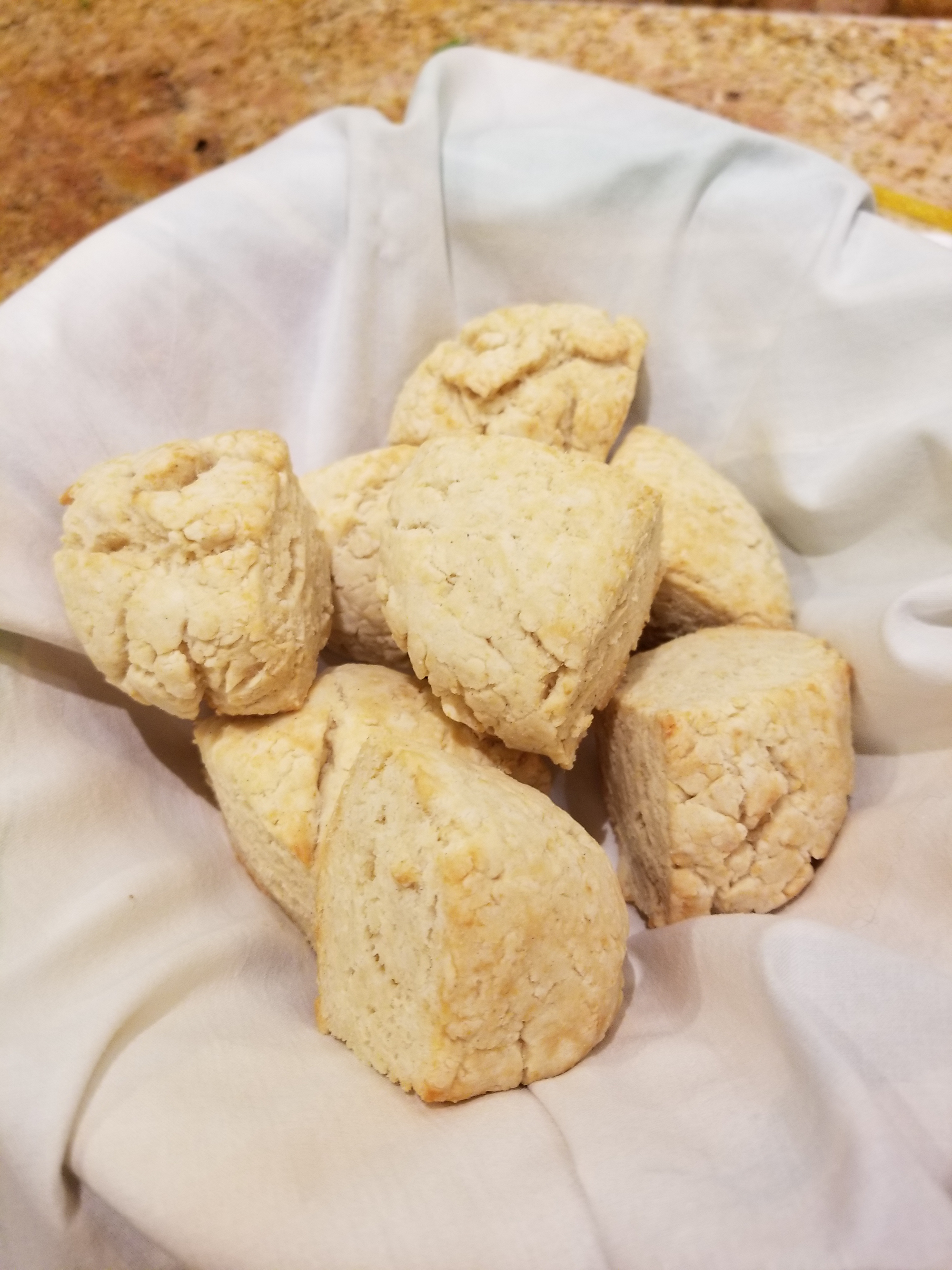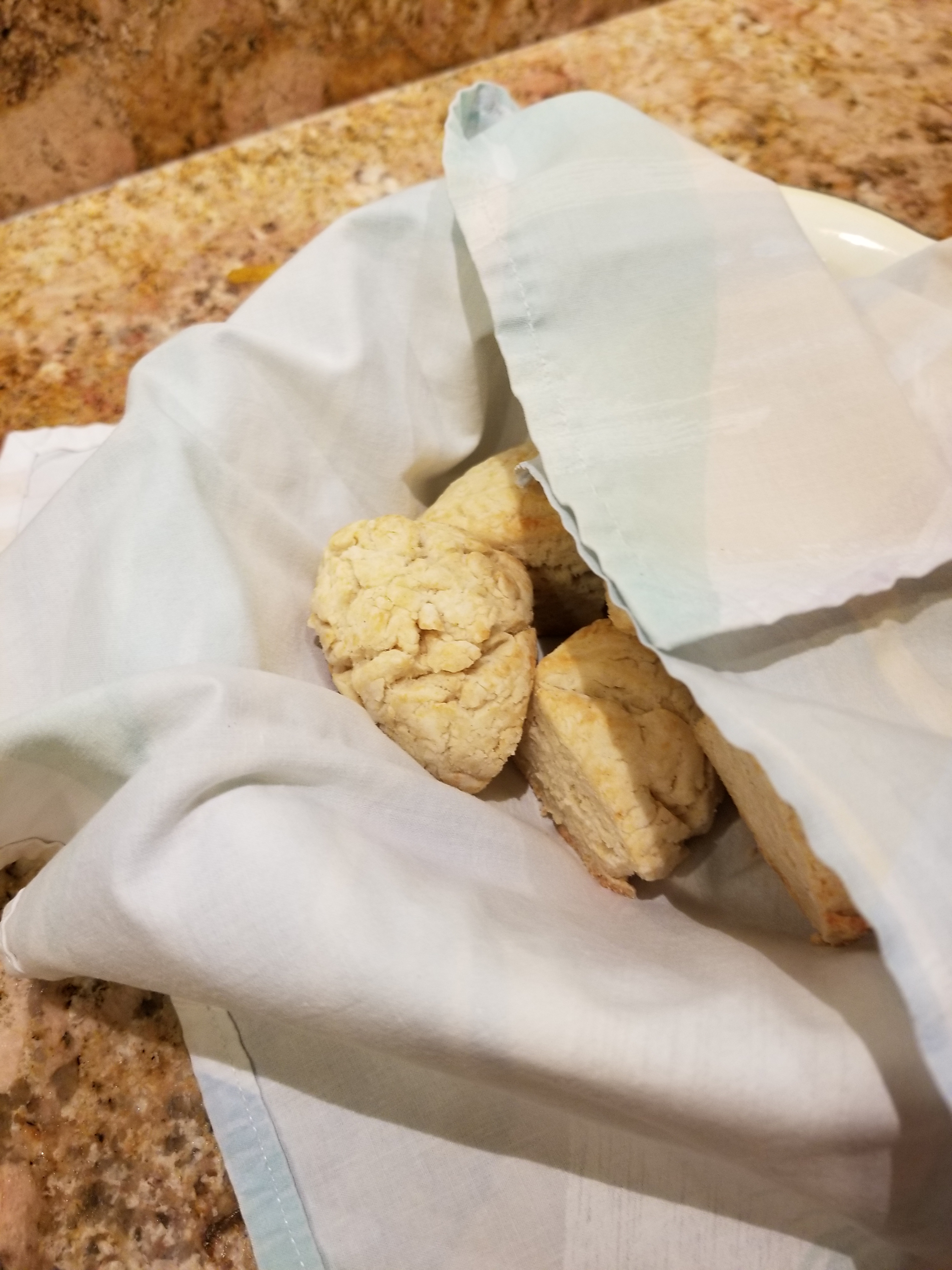Someday I'll write a post comparing English and American foods of the same name: biscuit vs biscuit, muffin vs muffin, pudding vs pudding, pancake vs pancake. This is not that post. This is a post about American biscuits, pure and simple ... and wonderful.

Today "biscuit" in America refers almost exclusively to baking powder biscuits. They date back to the 19th century, when baking powder was first invented. Prior to that, I think biscuits were made from sourdough. Nowadays, of course, many people think that biscuits come from a can, or the freezer case at the grocery store, or even a fast-food restaurant. For the record, I love them all. (Almost any breadstuff finds a place in my heart.) But delicious homemade biscuits are so easy to make and so satisfying to eat, they really deserve to be enjoyed more often.
I think people all over America make and eat biscuits, but here in the South, biscuits have their true home. No one respects biscuits like a Southerner does. Even fast-food restaurants routinely serve good biscuits freshly baked in-house. And you should too! They can be served at any meal, and can come in any size. I tend to make them quite small, but you can also make "cathead" biscuits (supposedly the size of a cat's head) from the same recipe. A cathead biscuit is a great base for leftovers: warm up some leftover stew (or really anything with a gravy component), pour over a split biscuit, and you have a lovely hot meal in no time.
There are certainly many biscuit recipes to choose from. In a recipe with such simple ingredients, I think quality really make a difference. Originally, biscuits were made with lard; later this was replaced with vegetable shortening (such as Crisco). Nothing wrong with these, but biscuits made with butter have a superior flavor. I also find the brand of baking powder makes a real difference: some brands seem to leave a bit of a chemical after-taste. My favorite brand is Rumford, which happens to be aluminum-free – I believe that contributes to the excellent, buttery flavor of these biscuits.

It used to be said of a good pastry chef that he or she had "a light hand" with pastry. This refers to the fact that most unyeasted pastries should be handled as lightly and as little as possible, and will become tough and heavy if over-handled. It can be particularly challenging to handle biscuits lightly, as the usual instructions tell you to roll out the biscuit dough, cut round biscuits, gather up the scraps, knead them together, and re-roll them, repeating until you run out of dough. All of that kneading and re-rolling does not make the biscuits better. In this recipe, I suggest wedge-shaped biscuits, which require no re-rolling, and are maximally tender and flaky.
Notes
This recipe is for gluten-free biscuits. If you do not want gluten-free biscuits, you can use all-purpose flour, bread flour, or (my favorite) whole-wheat pastry flour. A "soft wheat" all-purpose flour such as White Lily is very traditional. I don't recommend using self-rising flour in this recipe.
As noted above, the secret to a tender, flaky biscuit is to handle it lightly. Once you add the milk, stir just enough to moisten the ingredients. Once you have a loose dough (this kind of dough is sometimes called "shaggy"), knead it just a few times so that it holds together.
Inspiration
This recipe is my adaptation of "Baking Powder Biscuits" from The Fannie Farmer Cookbook. I originally tried this recipe because it had more baking powder than many others, and I think that contributes to the lightness. I substituted butter for the original vegetable shortening, and I've found over the years that I prefer taller biscuits, so I started patting them into shape rather than using a rolling pin. (It's really easy to roll the dough too thin if you use a rolling pin.)

I'm indebted to my mother for the idea of cutting biscuits with a knife rather than a biscuit cutter. My mother was a busy woman with a large family to feed. She would roll out biscuit dough and use a long-bladed knife to cut it into strips. Then she would cut cross-wise to make diamond-shaped biscuits. All done in a moment, and no dough wasted. When I started baking for myself, it occurred to me that my mother's method required no re-rolling of the dough. I am sure this contributed to the superior texture of her biscuits, so I have adapted this method for myself. Thanks, Mom!

Comments powered by Talkyard.